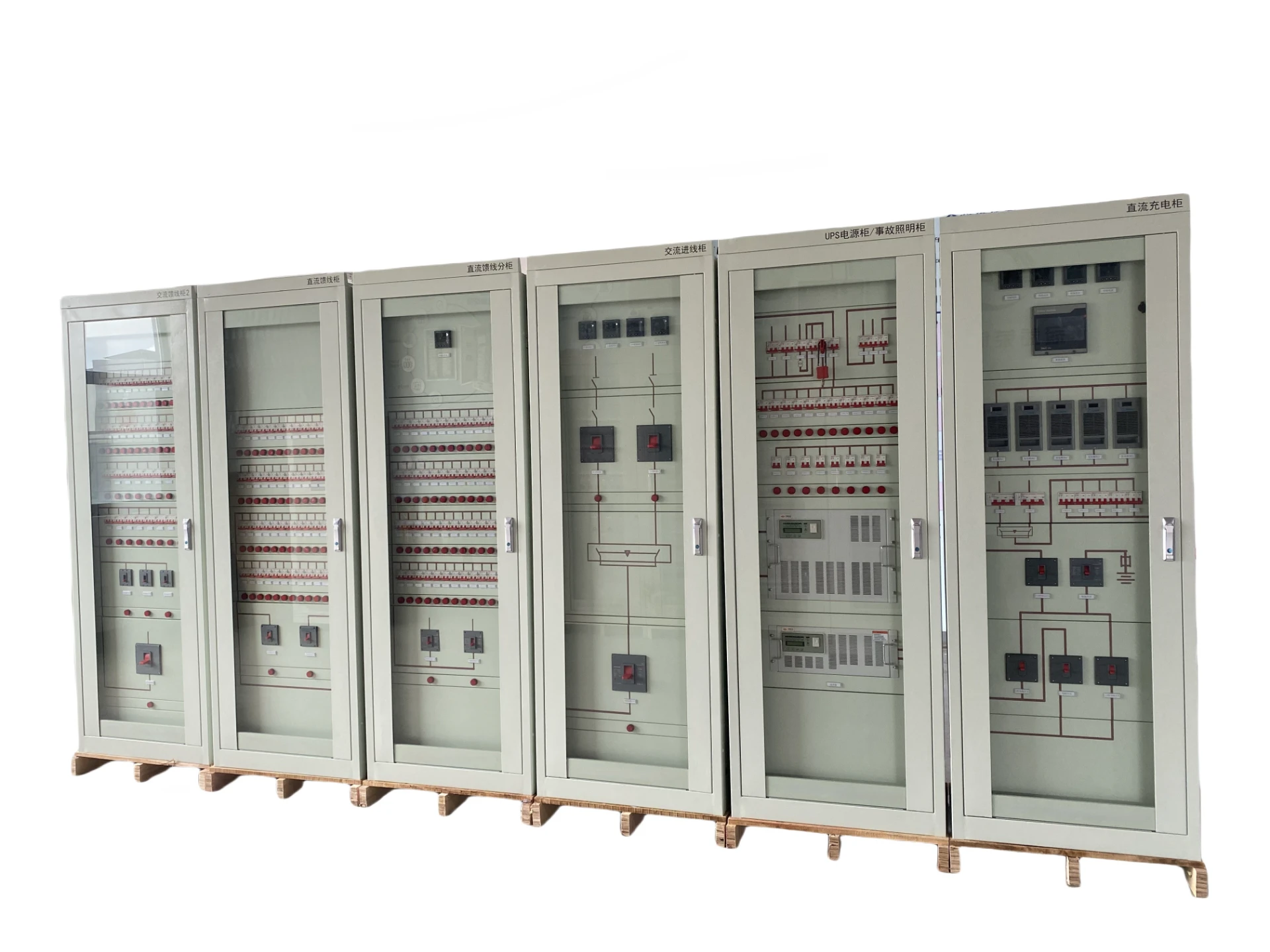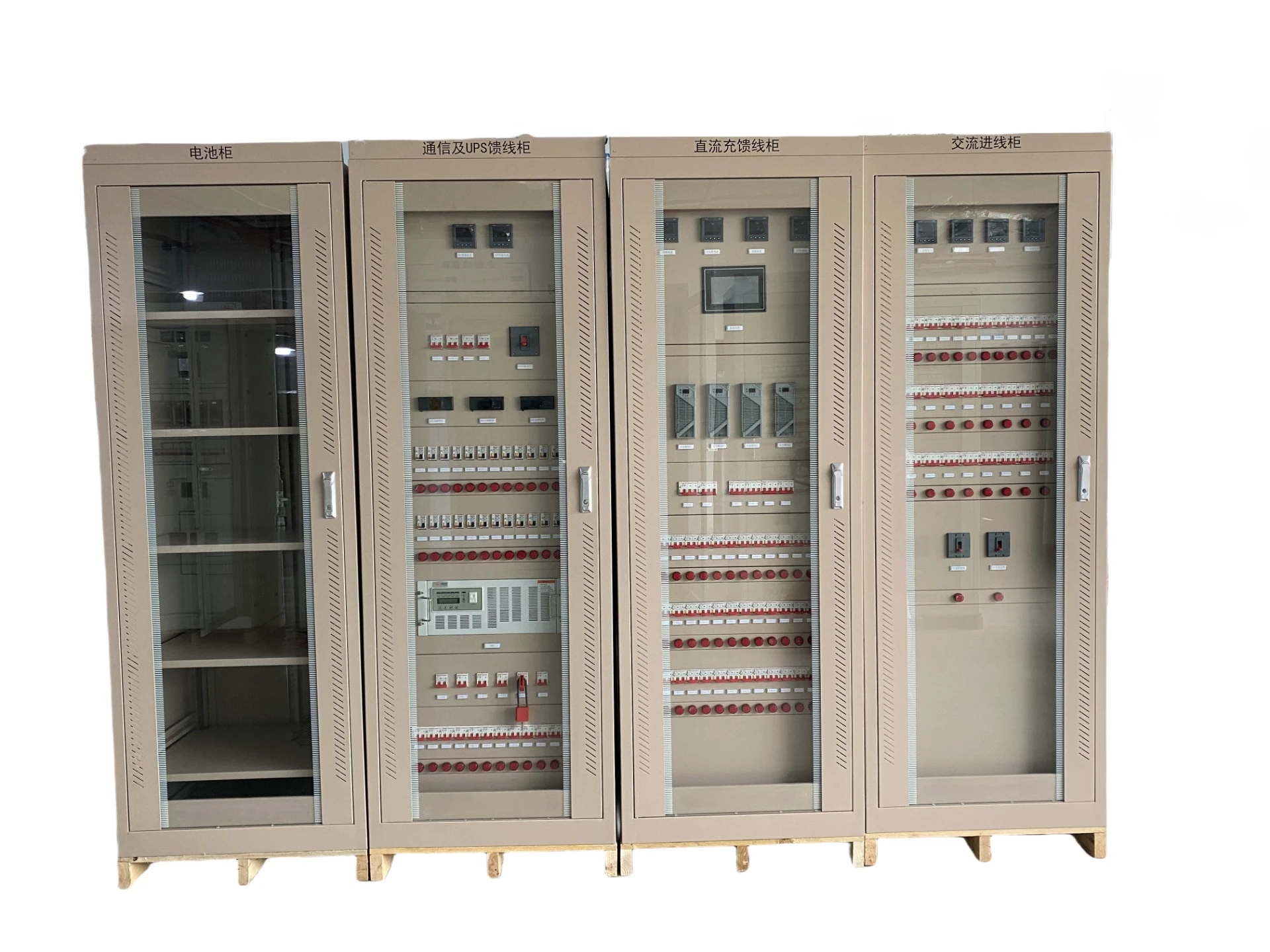
Août . 14, 2025 00:40 Back to list
Intelligent Energy Management: Save & Control Your Power
Navigating the Future of Energy:
Advanced Intelligent Energy Management
In an era defined by fluctuating energy costs, environmental imperatives, and the relentless march of technological innovation, the demand for sophisticated energy solutions has never been more critical. At the forefront of this revolution is intelligent energy management, a paradigm shift from reactive power consumption to proactive, optimized energy utilization. This comprehensive approach integrates advanced sensing, communication, control, and data analytics to provide a holistic view and precise control over energy flows, from generation to consumption. It's not merely about reducing energy bills; it's about enhancing reliability, ensuring sustainability, and building resilient infrastructure for the future. For B2B stakeholders, understanding and implementing these systems is paramount to achieving operational efficiency and competitive advantage.
Industry Trends and Market Dynamics
The global energy landscape is undergoing profound transformations, driven by decarbonization goals, the proliferation of renewable energy sources, and the increasing electrification of industries. Key trends include the decentralization of power generation, the rise of grid edge technologies, and the imperative for greater grid flexibility. An intelligent energy management system is becoming indispensable for managing intermittent renewable generation, optimizing energy storage, and facilitating demand-side response programs. According to a recent report by Grand View Research, the global smart energy market size was valued at USD 156.4 billion in 2022 and is projected to grow at a compound annual growth rate (CAGR) of 10.9% from 2023 to 2030 (1), underscoring the robust market demand and investment in this sector. This growth is further fueled by smart city initiatives and the adoption of IoT in industrial and commercial settings, creating unprecedented opportunities for advanced energy solutions.
Furthermore, the integration of artificial intelligence (AI) and machine learning (ML) is pushing the boundaries of what is possible in intelligent energy management. These technologies enable predictive analytics for energy demand, proactive fault detection, and real-time optimization of energy dispatch, leading to significant improvements in operational efficiency and cost savings. The convergence of IT and OT (Operational Technology) networks is also a critical trend, allowing for seamless data exchange and more informed decision-making across complex energy ecosystems, enhancing the overall resilience and adaptability of energy infrastructure.
Technical Parameters of Advanced Energy Management Solutions
Implementing an effective intelligent energy management system requires a deep understanding of its core technical parameters. These specifications determine the system's capacity, efficiency, reliability, and adaptability to diverse operational environments. Our Intelligent Integrated Power Supply exemplifies these advanced capabilities, designed to meet the rigorous demands of modern industrial and commercial applications.
| Parameter | Description | Typical Range / Specification |
|---|---|---|
| Rated Power Output | The continuous power the system can deliver to connected loads. | 5 kW - 200 kW (scalable, up to MW scale in parallel) |
| Battery Capacity (Storage) | Total usable energy storage capacity, measured in kilowatt-hours (kWh). | 10 kWh - 500 kWh (LiFePO4, modular expansion) |
| System Efficiency (Round-trip) | Overall energy conversion efficiency, including charging and discharging losses. | > 95% (DC to AC and AC to DC) |
| Response Time | Time taken for the system to react to sudden load changes or grid signals. | < 20 ms (for seamless critical load transfer) |
| Communication Protocols | Supported industry standards for integration with external control and monitoring systems. | Modbus TCP/IP, CAN, RS485, Ethernet, Wi-Fi, SNMP, API support |
| Operating Temperature Range | Environmental temperature range for safe and efficient operation. | -20°C to +55°C (with active thermal management) |
| Lifecycle (Battery) | Number of complete charge/discharge cycles before significant capacity degradation (typically 80% of original). | > 6000 cycles at 80% Depth of Discharge (DOD) |
| Certifications | Compliance with international safety and performance standards. | CE, IEC 62619 (2), UL 1973 (3), TUV, RoHS, UN38.3 |
These parameters are crucial for system integrators and end-users alike, ensuring that the deployed intelligent energy management solution meets the specific operational demands and compliance requirements of their facility. High efficiency and robust communication protocols, for instance, are indicative of a system's ability to seamlessly integrate into complex industrial environments and deliver long-term value. Our systems are engineered to provide maximum uptime and minimize energy losses, directly contributing to a lower total cost of ownership (TCO).
Application Scenarios and Strategic Advantages
The versatility of intelligent energy management solutions allows for their deployment across a broad spectrum of industries and applications, each benefiting from optimized energy flows and enhanced operational resilience. Our Intelligent Integrated Power Supply provides adaptive and robust power solutions across diverse sectors.
- Industrial Facilities (Petrochemical, Metallurgy, Manufacturing): In these high-energy-consumption sectors, an intelligent energy management system reduces peak demand charges, provides seamless backup power for critical processes, and optimizes the integration of captive renewable energy generation. For instance, in a metallurgical plant, stable power supply is crucial to prevent costly production interruptions and equipment damage. Our solution ensures consistent power quality and availability, enhancing operational safety and efficiency in environments where corrosion resistance is also paramount.
- Commercial Buildings (Offices, Data Centers, Retail): Optimizing HVAC systems, lighting, and IT infrastructure significantly lowers operational costs and reduces carbon footprint. Data centers, in particular, benefit from resilient power solutions that guarantee uptime and efficient cooling, where every kilowatt-hour saved directly impacts profitability and Power Usage Effectiveness (PUE).
- Smart Grids and Utility Support: These systems can act as grid assets, providing ancillary services like frequency regulation, voltage support, and peak shaving, thus enhancing overall grid stability and reliability. This is especially vital as more intermittent renewables are integrated into the grid, enabling distributed energy resource (DER) management.
- Remote and Off-Grid Sites: For locations without reliable grid access, an intelligent energy management system paired with renewable sources (e.g., solar, wind) creates self-sufficient microgrids, ensuring continuous power supply for critical infrastructure such as telecom towers, mining operations, or agricultural facilities requiring robust and reliable power.
- Water Supply & Drainage Systems: Ensuring continuous operation of pumps and control systems in municipal water treatment and distribution is critical. Our solutions provide reliable backup power and demand management capabilities, preventing service interruptions and optimizing energy usage in these vital public services. While our primary focus is B2B, the principles extend to advanced home energy storage system integration for distributed energy resources.
Beyond direct energy savings, the strategic advantages include improved power quality, enhanced energy security, reduced carbon emissions, and compliance with increasingly stringent environmental regulations. The proactive nature of intelligent energy management also mitigates risks associated with power outages and price volatility, transforming energy from a cost center into a strategic advantage.
Technological Superiority and Performance Benchmarks
Our Intelligent Integrated Power Supply stands out due to its advanced technological architecture and robust performance. Key technical advantages include:
- Modular Design: Enables flexible scaling of power and energy capacity from kilowatts to megawatts, adapting to evolving operational needs without complete system overhauls. This modularity simplifies installation, maintenance, and future expansion, reducing total project costs and downtime.
- High-Density LiFePO4 Battery Integration: Ensures superior safety, longer cycle life (>6000 cycles at 80% DoD), and higher energy density compared to traditional lead-acid or even NMC batteries, minimizing footprint and maximizing operational longevity. Integrated Battery Management System (BMS) ensures optimal performance and safety.
- Advanced Bi-directional Power Conversion System (PCS) Technology: Facilitates seamless and efficient conversion between AC and DC, supporting grid-tied, off-grid, and hybrid modes. This ensures consistent power quality, low harmonic distortion (<3% THD), and efficient energy flow regardless of the source or load, crucial for sensitive industrial equipment.
- AI-Powered Predictive Analytics: Leverages machine learning algorithms to forecast energy demand, optimize charging/discharging cycles based on market prices and operational needs, and identify potential system anomalies before they lead to failures. This predictive capability is central to true intelligent energy management, minimizing downtime and optimizing costs.
- Robust Cybersecurity Measures: With increasing connectivity, system security is paramount. Our solutions incorporate multi-layered encryption, stringent access control, secure boot processes, and continuous monitoring to protect sensitive operational data from cyber threats, ensuring system integrity and data confidentiality.
- Remote Monitoring and Control: A centralized cloud-based platform provides real-time visibility into system performance, energy flows, and status. It enables remote diagnostics, firmware updates, and operational adjustments, ensuring optimal performance and proactive maintenance, reducing the need for on-site interventions.

A sophisticated interface demonstrating real-time data for intelligent energy management, offering granular control and insights.
These technological advantages collectively result in systems that offer unparalleled reliability, efficiency, and longevity, significantly reducing total cost of ownership (TCO) for industrial and commercial users. Our solutions are designed to operate flawlessly even in the most demanding environments, providing a competitive edge through optimized energy use.
Manufacturing Process: Ensuring Precision and Reliability
The robust performance and longevity of our Intelligent Integrated Power Supply are direct results of a meticulously engineered manufacturing process, adhering to the highest industry standards. Our commitment to quality control from raw material sourcing to final assembly ensures that every unit delivers optimal performance in demanding B2B environments. We uphold ISO 9001 (4) quality management systems at every step.
Detailed Process Overview:
- Material Sourcing & Quality Inspection: We meticulously select raw materials, including high-grade steel alloys for enclosures (often employing precision sheet metal fabrication and specialized casting/forging for structural components) and pure electrolytic copper for busbars and wiring. All incoming materials undergo rigorous inspection against international standards like ASTM and JIS to verify composition, mechanical strength, and purity, preventing corrosion in harsh environments (e.g., petrochemical, water supply/drainage) and ensuring long-term durability.
- Precision Component Manufacturing: Critical components, such as power converters, inverters, and sophisticated control boards, are fabricated in-house or by certified, audited partners. This involves advanced manufacturing techniques like multi-layer PCB fabrication, automated surface-mount technology (SMT) for electronic assembly, and high-precision CNC machining for enclosure parts, heatsinks, and complex mechanical assemblies. Each stage includes stringent in-line quality checks, such as automated optical inspection (AOI) for PCBs and dimensional verification for machined parts, adhering to ANSI standards for tight tolerances and accuracy.
- Battery Module Assembly & Testing: Individual LiFePO4 cells from reputable tier-1 suppliers are assembled into robust modules, incorporating an advanced Battery Management System (BMS) for cell balancing, thermal management, and comprehensive protection. Each battery module undergoes extensive charge/discharge cycling tests, internal resistance tests, and safety tests (e.g., overcharge, over-discharge, short circuit, crush test) in accordance with IEC 62619 (2) and UL 1973 (3) standards to guarantee reliability, safety, and a long lifecycle, typically exceeding 6000 cycles at 80% Depth of Discharge.
- System Integration & Cabling: All manufactured components and battery modules are expertly integrated into the main power supply unit chassis. This critical phase involves precise electrical wiring, secure cable management, and meticulous component placement. All electrical connections are torque-tested to specifications, and wiring harnesses undergo continuity, insulation resistance, and hipot tests to prevent failures and ensure electrical safety and compliance.
- Software & Firmware Installation and Calibration: The proprietary intelligent energy management system software and firmware, which include algorithms for predictive analytics, energy optimization, and communication protocols, are loaded onto the control units. This is followed by a comprehensive calibration process, ensuring all sensors and control loops are finely tuned for optimal system performance and accuracy.
- Comprehensive Factory Acceptance Testing (FAT): Before shipment, every Intelligent Integrated Power Supply undergoes a rigorous Factory Acceptance Test. This includes full load testing, efficiency verification, transient response tests, thermal performance assessment under various loads, communication protocol validation, and simulated fault conditions. Environmental chamber testing is performed to confirm robust performance across the specified operating temperature range (-20°C to +55°C), critical for deployment in diverse global climates.
- Packaging & Logistics: Finished units are securely packed in custom-designed industrial-grade crates, often incorporating shock-absorbing materials, internal bracing, and humidity control to prevent any damage during transit to global destinations, ensuring safe arrival at the client site.
This meticulous process, with integrated ISO and ANSI compliance, ensures a projected service life of 15-20 years for our power supply units, even in harsh industrial environments such as those found in petrochemical or metallurgical industries. Our robust engineering prevents issues like corrosion in chemical plants and ensures consistent operation in high-vibration metallurgical facilities, contributing significantly to energy savings and operational reliability.

Assembly line demonstrating precision manufacturing of an intelligent energy management system component, emphasizing quality control.
Manufacturer Comparison: Why Choose Our Solution?
While several providers offer energy management solutions, a critical assessment reveals distinct advantages of our Intelligent Integrated Power Supply, especially for B2B applications where reliability, scalability, and long-term cost-effectiveness are paramount. Our focus on industrial-grade performance and comprehensive integration sets us apart.
| Feature | Our Intelligent Integrated Power Supply | Typical Competitor A (e.g., Focus on Residential) | Typical Competitor B (e.g., Legacy Systems) |
|---|---|---|---|
| Target Market Focus | Industrial, Commercial, Utility-scale intelligent energy management system with high demands | Primarily home energy storage system and small commercial (e.g., SMBs) | Generic grid-tied inverters, less integrated, often for basic backup |
| Battery Chemistry | LiFePO4 (Lithium Iron Phosphate): Superior safety, thermal stability, long cycle life, and non-toxic | NMC (Nickel Manganese Cobalt) or older Li-ion variants: Higher energy density but lower cycle life, less thermal stability | Lead-acid or basic Li-ion (e.g., Lithium Polymer): Limited performance, shorter lifespan, larger footprint |
| Integration Level | Highly integrated (PCS, BMS, EMS, batteries, thermal management in one unit, plug-and-play) | Separate components (inverter, battery, EMS) requiring more complex integration and wiring | Basic energy monitor, often no active control or limited functionality |
| AI/ML Capabilities | Advanced predictive analytics, self-learning optimization for demand response, energy trading, proactive maintenance | Basic forecasting, rule-based automation (e.g., time-of-use scheduling) | None or minimal, typically just data logging |
| Cybersecurity | Enterprise-grade security protocols, end-to-end encryption, continuous threat monitoring, penetration testing | Standard IT security measures, often relying on router firewalls | Basic network security, potentially vulnerable to attacks |
| Warranty & Lifespan | Comprehensive 10-year warranty on major components, 15-20 year design life for overall system | 5-7 year warranty on components, 10-12 year design life | 2-5 year warranty, 5-8 year design life |
This comparison highlights our strategic differentiation: a purpose-built, highly integrated, and technologically advanced solution specifically engineered for the complexities and demands of industrial and large-scale commercial intelligent energy management. Our focus on robustness, scalability, and long-term performance translates directly into superior return on investment for our clients, ensuring lower operational costs and enhanced reliability over the entire system lifecycle.
Customized Solutions and Consultation
Recognizing that no two industrial or commercial operations are identical, we specialize in delivering bespoke intelligent energy management solutions. Our process begins with an in-depth energy audit and site assessment, performed by our team of certified energy engineers with extensive experience in diverse industrial sectors. We meticulously analyze existing consumption patterns, critical load requirements, renewable energy generation potential, and specific operational challenges such as power quality issues, peak demand penalties, or grid instability.
Based on this comprehensive analysis, we design a tailored system architecture, recommending optimal power and storage capacities, ideal integration points within your existing infrastructure (e.g., connection to main switchgear, renewable energy sources), and advanced control strategies. This collaborative approach ensures the deployed solution not only addresses current energy needs but also scales to accommodate future growth and evolving regulatory landscapes, such as carbon emission targets or grid service participation. From conceptual design to precise engineering, procurement, construction, commissioning, and post-installation support, our expertise ensures a seamless transition to optimized energy operations and maximum value realization.
Client Success Stories and Application Cases
Our track record of successful deployments underscores the tangible benefits and proven reliability of our intelligent energy management system across various demanding applications.
- Large-Scale Manufacturing Plant, Europe: Deployed a 500 kW / 1 MWh Intelligent Integrated Power Supply to manage peak demand, provide seamless backup power, and optimize the integration of a new 750 kW rooftop solar PV array. Result: 25% reduction in annual electricity bills, complete avoidance of peak demand charges during critical periods, and enhanced power reliability, leading to a 15% reduction in unscheduled production downtime. Client feedback: "The system paid for itself within four years, and the continuous monitoring provides invaluable, actionable insights into our energy consumption patterns, allowing us to make data-driven operational improvements."
- Remote Mining Operation, Australia: Implemented a 100 kW / 200 kWh off-grid solution, intelligently integrated with existing diesel generators and a 150 kW solar array, to provide stable and continuous power for critical mining equipment in a harsh, isolated environment. Result: 60% reduction in diesel consumption, significantly lowered operational costs (fuel and maintenance), and 24/7 power availability, even during extreme weather events. This project exemplifies how an intelligent energy management system ensures operational continuity and economic viability far from traditional grids.
- Commercial Data Center, North America: Upgraded an existing backup power system with our Intelligent Integrated Power Supply, adding advanced intelligence for dynamic load shifting, frequency regulation, and optimized UPS (Uninterruptible Power Supply) battery management. Result: Improved Power Usage Effectiveness (PUE) by 0.05 points, extended the lifespan of existing UPS batteries through optimized charging and discharging cycles, and ensured seamless transition during grid disturbances with zero downtime. This case highlights the system's ability to enhance and modernize existing critical infrastructure.
Trust and Support: FAQ, Delivery, and Warranty
Building trust with our B2B clients is paramount. We achieve this through transparent processes, comprehensive support, and robust guarantees, ensuring peace of mind throughout the lifecycle of your intelligent energy management solution.
Frequently Asked Questions (FAQ):
-
Q: What is the typical return on investment (ROI) for an intelligent energy management system?
A: ROI varies based on factors such as your existing energy costs, local utility tariffs, system size, and specific applications (e.g., peak shaving, renewable integration, backup power). However, clients typically see payback periods ranging from 3 to 7 years, driven by significant reductions in energy bills, avoidance of costly peak demand charges, improved operational uptime, and potential carbon credit opportunities. Our detailed financial analysis during the consultation phase provides a precise and transparent ROI projection tailored to your specific operational context. -
Q: How does your system integrate with existing infrastructure and control systems?
A: Our Intelligent Integrated Power Supply is designed for high compatibility and seamless integration. It supports a wide range of industry-standard communication protocols including Modbus TCP/IP, CAN, Ethernet, and RS485. Furthermore, it can be seamlessly integrated with existing SCADA (Supervisory Control and Data Acquisition) systems, Building Management Systems (BMS), and Industrial Control Systems (ICS) via open APIs (Application Programming Interfaces), ensuring fluid data exchange and centralized control. Our experienced engineers work closely with your IT/OT teams to ensure a smooth and secure integration process. -
Q: What kind of maintenance does the system require, and what is the typical service life?
A: Our systems are engineered for minimal maintenance requirements due to their robust construction, intelligent self-diagnostics, and high-quality components. Regular maintenance typically involves periodic visual inspections, remote software/firmware updates, and performance checks, usually on an annual basis. The Intelligent Integrated Power Supply has a designed service life of 15-20 years for the overall system, with battery modules rated for over 6000 cycles. We offer comprehensive service contracts for preventive maintenance, priority remote and on-site support, and dedicated customer service to ensure peak performance throughout its extended operational lifespan.
Delivery and Installation:
We maintain a streamlined and efficient global supply chain to ensure timely delivery of our Intelligent Integrated Power Supply units. Typical lead times for standard configurations range from 8 to 12 weeks, depending on specific component availability and customization requirements. For large-scale or highly customized projects, a detailed project timeline with key milestones is provided upon order confirmation. Our global logistics partners ensure secure and efficient transportation to your site, and our network of certified installation teams or local partners provides professional commissioning services to guarantee optimal system performance from day one, adhering to all local safety and electrical codes.
Warranty and After-Sales Support:
We stand firmly behind the quality and reliability of our products with a robust and transparent warranty. The Intelligent Integrated Power Supply comes with a standard 10-year warranty on major components including the inverter, battery modules, and the Energy Management System (EMS) controller. This is coupled with a designed product lifespan of 15-20 years, reflecting our confidence in the durability of our engineering. Our comprehensive after-sales support includes 24/7 technical assistance, advanced remote diagnostics capabilities, on-site service options available through our global network, and access to our dedicated team of certified technicians. We are committed to ensuring your intelligent energy management system operates at peak performance throughout its entire operational lifecycle, maximizing your investment.
Conclusion and Future Outlook
The journey towards a more sustainable, efficient, and resilient energy future is inextricably linked with the advancement and widespread adoption of sophisticated intelligent energy management solutions. As industries face increasing pressure to optimize resources, reduce operational costs, and minimize environmental impact, integrated power supplies represent a critical enabler for smart, resilient, and cost-effective energy operations. Our unwavering commitment to cutting-edge technology, rigorous manufacturing standards, and unparalleled customer support ensures that our Intelligent Integrated Power Supply is not just a product, but a strategic asset designed for your business's long-term success. Embrace the transformative power of intelligent energy and redefine your operational landscape for a more sustainable and prosperous future.
References
- Grand View Research. (2023). Smart Energy Market Size, Share & Trends Analysis Report.
- International Electrotechnical Commission (IEC). (2022). IEC 62619: Secondary cells and batteries containing alkaline or other non-acid electrolytes – Safety requirements for secondary lithium cells and batteries, for use in industrial applications.
- Underwriters Laboratories (UL). (2021). UL 1973: Standard for Batteries for Use in Stationary, Motive, and Light Electric Rail (LER) Applications.
- International Organization for Standardization (ISO). (2015). ISO 9001: Quality management systems – Requirements.
This is the last article
-
Intelligent Energy Management: Save & Control Your Power
NewsAug.14,2025
-
Optimize Energy with Advanced Management Systems
NewsAug.13,2025
-
Energy Management System: Optimize & Save | OEM EMS Solutions
NewsAug.12,2025
-
Efficient Energy Storage Cabinet for Solar Battery & EMS
NewsAug.11,2025
-
Energy Management System (EMS): Optimize Efficiency & OEM
NewsAug.10,2025
-
Energy Management System: Monitor, Control, Optimize Costs
NewsAug.09,2025























